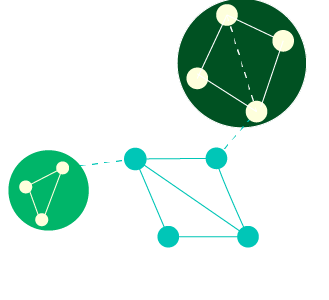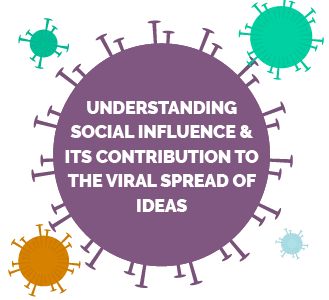Having an understanding of the difference between strong and weak ties in social networks, and their relevance to your business growth, distinguishes brands with self-perpetuating reach from those that are mostly stagnant.
In all things business and marketing, an adept strategist will balance short-term gains with long-term ambitions. They’ll develop processes that mature into passive contributors to long-term business success.
By this, we mean processes that continue to produce results without the need for continuous involvement and investment. Processes that “snowball”, for lack of a better word.
Leveraging strong and weak ties tactically represents a powerful opportunity to create a system that spreads brand awareness. But in a way that is self-fulfilling in the long term with minimal time or resource-investment.
This is because using strong and weak ties effectively enables you to move from a quantity-centric network approach to a quality-centric approach; an approach that maximises spread, effectively creating a machine that generates organic reach.
This article will explain how strong and weak ties function, and why they are important. As well as which tie is best for your business, and how you can leverage them to great effect.
What Are ‘Ties’?
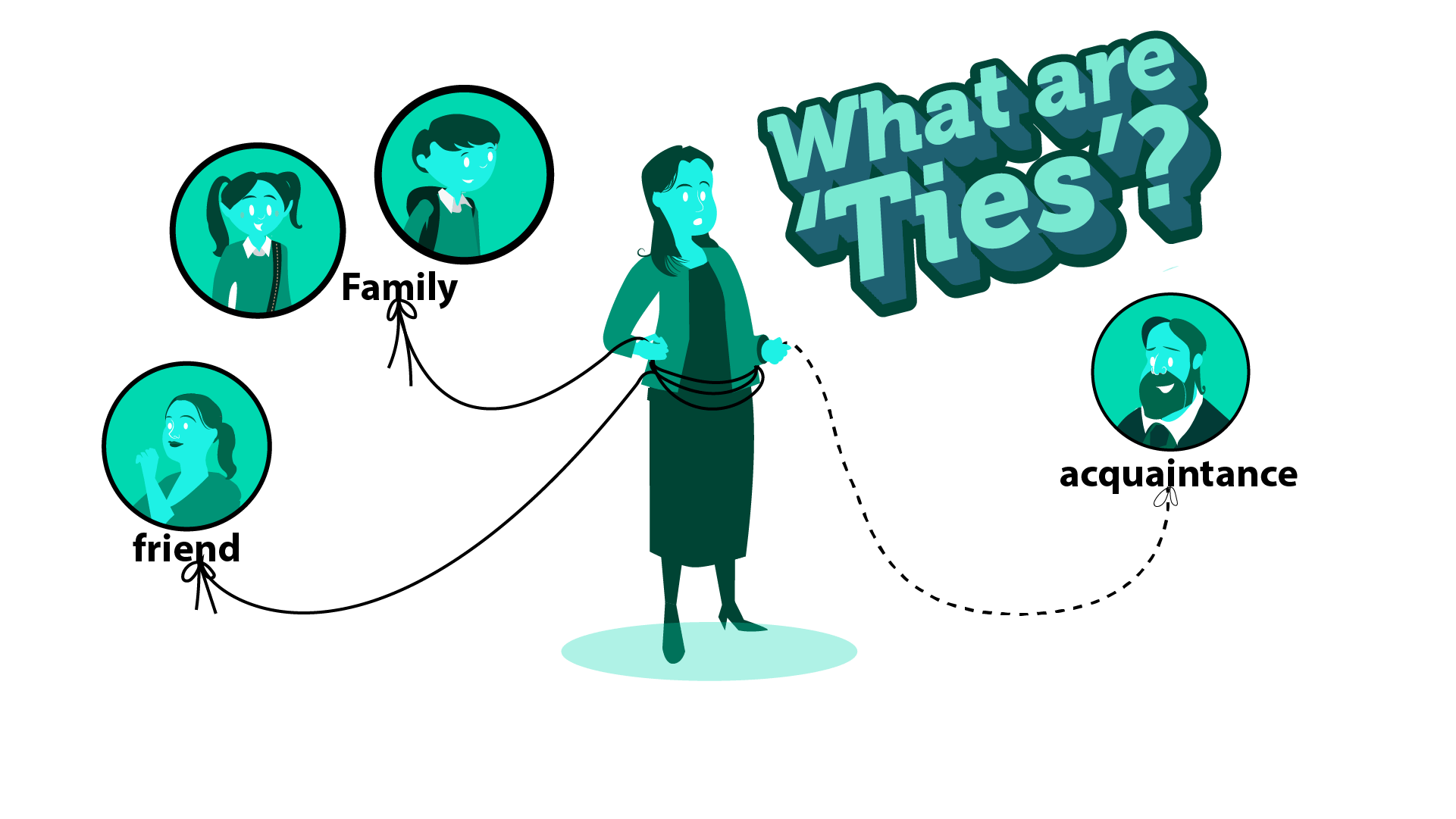 Ties represent connections between individuals or groups.
Ties represent connections between individuals or groups.
A connection of any kind—whether in the form of an acquaintance, friend or family member—is a tie. The nature of that connection determines whether the tie is weak or strong.
It is important to note that there is no definitive formula for determining whether a tie is weak or strong. As you may have experienced in your personal life, one person’s perception of a connection does not necessarily always align with the perception of the person on the other end of that connection.
Distinguishing weak ties from strong ties is discretionary. There is no right or wrong answer, because the difference between strong and weak ties is wholly dependent on subjective judgement.
The Traditional Interpretation of Strong & Weak Ties
Ties exist in all spheres of life, from personal interactions to business, marketing, and politics. Within each of these categories, strong and weak ties will mean different things, but the same general principles apply.
However, the traditional interpretation of strong and weak ties, can be slightly misleading. The qualifiers “strong” and “weak” can often be misinterpreted in discussion of ties. With many attributing strength or weakness to a tie that, within certain contexts, may well be the opposite. More on this below.
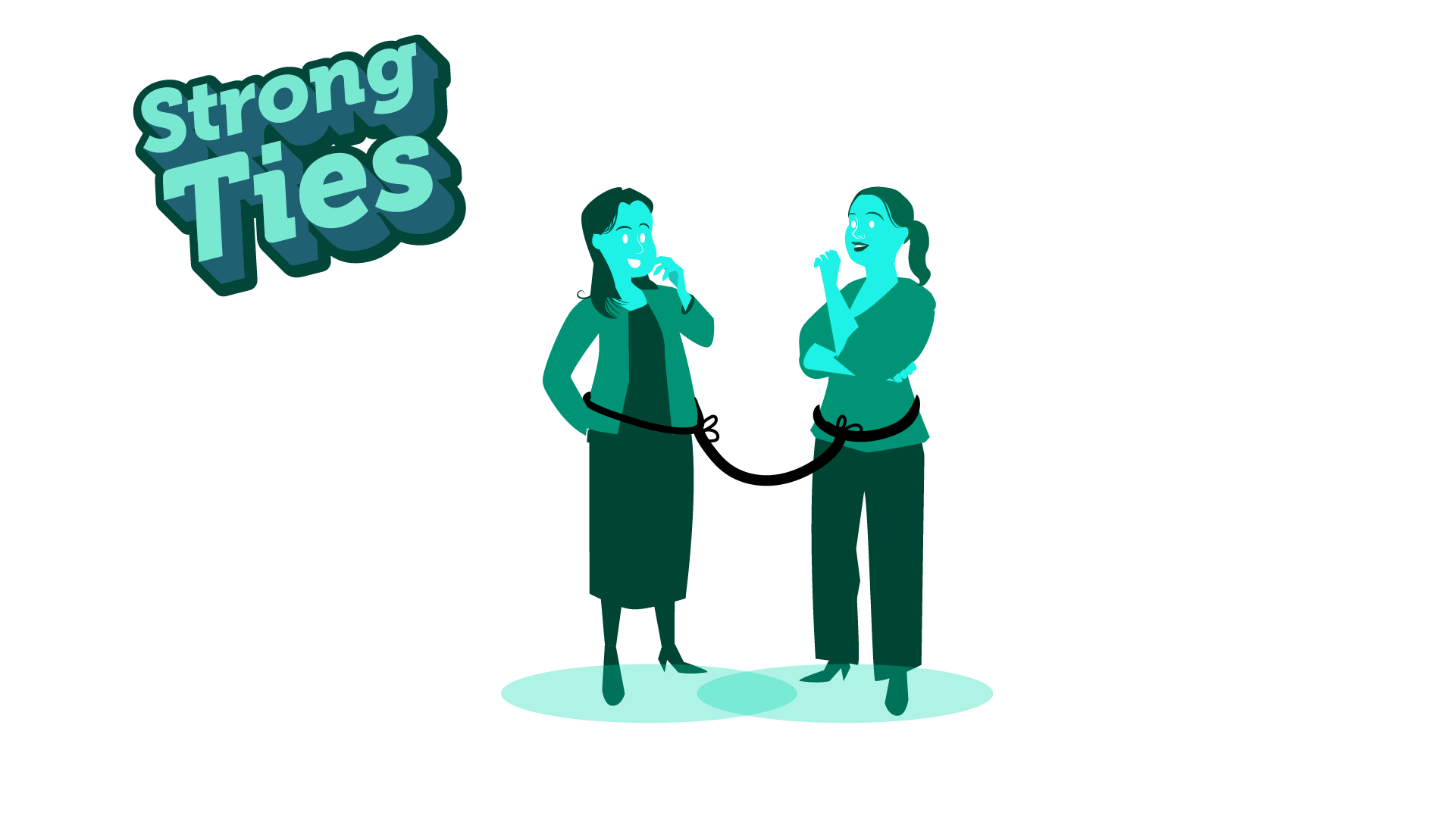
What Are Strong Ties?
Traditionally, a strong tie is defined as a connection between close-knit individuals. This might include family members and close friends. Individuals with strong ties usually engage in frequent communication or interactions; this also ensures the longevity and strength of their tie.
Our Interpretation of Strong Ties
It is important to note that the definition of a tie as “strong” is determined by emotional connection and familiarity; not by their influence over you or their level of persuasiveness. This is because influence and persuasiveness are contextual and largely determined by subject authority. Our interpretation of strong ties takes into account contextual factors that impact strength.
For example, you will inevitably have work ties that may feel very strong within the context of your working environment. Similarly, small villages are likely to have stronger ties within their village than larger communities. Particularly if that small village community has remained connected for decades.
Events and experiences can also create strong feelings of connection. Alcoholics Anonymous, and similar organisations, is founded on the principle of strong relationships between individuals within that shared context.
The strength of these connections, though not necessarily between family members or general friends, is extremely powerful. And within each specific context, the level of influence an individual has over you may well carry more weight than the influence of a traditional strong tie (i.e., a sibling) that exists outside of each context.
For example, imagine you are a member of a support group. You would attribute greater value to a recommendation on the subject of support from another member of the group than you would to your sister’s recommendation on the same subject. In this instance, despite the strength of the emotional tie to your sister, she lacks the credibility and subject authority to persuade you.
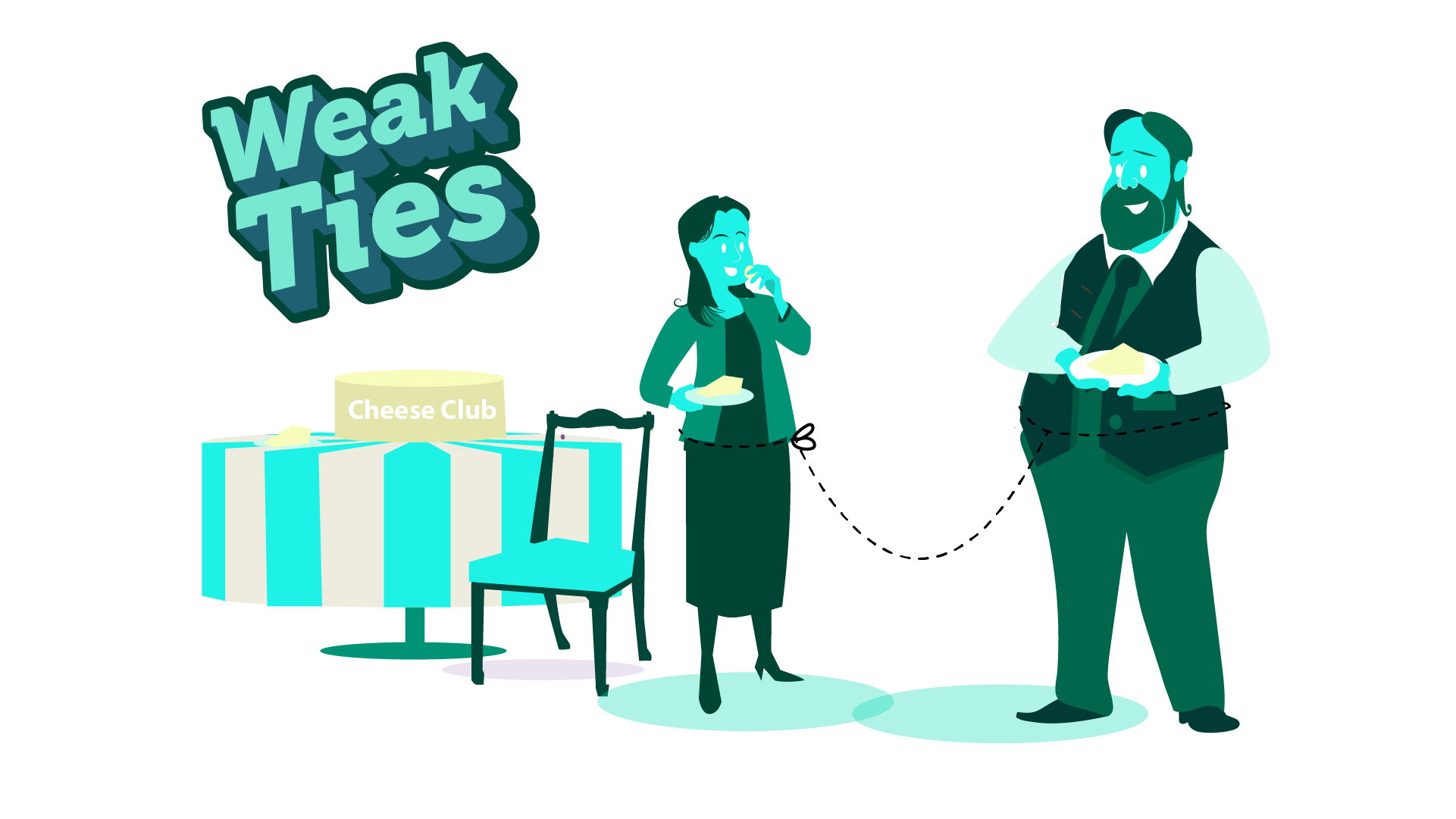
What Are Weak Ties?
In traditional terms, weak ties are typified by infrequent interactions and distant connections. They also cover a much broader range of individuals. This is likely to include associates and strangers who share similar interests or who are members of the same group. Weak ties might also include work colleagues and members of the same clubs.
Our Interpretation of Weak Ties
As with strong ties, the traditional definition of a tie as “weak” is determined by familiarity, not by their level of influence or authority. This means that there is a spectrum of influence within weak ties that is highly contextual. Because of this, the word “weak” can be very misleading.
As we’ve already explored, a tie traditionally defined as “weak” (such as members of the same support group) can be strong. This is because it may have very strong feelings of familiarity and connection associated with it.
For instance, let’s say you join a swimming club. You see the members every couple of weeks, but rarely talk outside of club sessions. These are weak ties. Despite this, if you were looking for swimming goggle recommendations, these particular weak ties will carry significant influence; far greater influence than strong ties (such as family and friends) who have no interest in swimming.
As another example, imagine you are trying to decide on a sci-fi film to watch. In this case, your old university friend who is an avid sci-fi fan, might be an especially authoritative weak tie.
Lastly, it is important to note that a weak tie may actually carry with it a sense of genuine emotional connection. For instance, two victims of the same illness may feel an extremely intense connection with one another. This is the perfect example of why the word “weak”, in discussion of ties, isn’t entirely helpful. Though it implies lack of familiarity, lack of emotion, and lack of power, traditional “weak” ties can be potent under the right circumstances.
Why Are Ties Relevant To Marketers?
As cited in the research paper titled Strong Ties Versus Weak Ties In Word-of-Mouth Marketing, “People are more inclined to listen to their peers and friends before they trust what a salesman says; thus, WOM [word-of-mouth] can often have a greater marketing effectiveness than other, non-personal forms of marketing activities like advertising.”
![Quote: “People are more inclined to listen to their peers and friends before they trust what a salesman says; thus, WOM [word-of-mouth] can often have a greater marketing effectiveness than other, non-personal forms of marketing activities like advertising.”](https://murraydare.co.uk/wp-content/uploads/strongAndWeak_updates_04.png) This conclusion is likely to align with your personal experiences as a consumer. Though largely resistant to cold calls and unsolicited emails from unknown organisations, it is safe to say that most of us are significantly less resistant to recommendations from family and friends. Similarly, we are more likely to act on the recommendation of a friend than a billboard’s call to action.
This conclusion is likely to align with your personal experiences as a consumer. Though largely resistant to cold calls and unsolicited emails from unknown organisations, it is safe to say that most of us are significantly less resistant to recommendations from family and friends. Similarly, we are more likely to act on the recommendation of a friend than a billboard’s call to action.
Although the term “word-of-mouth” implies oral communication, we include social media and other forms of online communications in our definition. Online communication is an equally (if not more) effective medium for tapping into interpersonal relationships. It’s a great way to promote your brand, and is of course increasingly relevant.
At the level of the individual, word-of-mouth recommendation is a powerful force. Though often perceived as a natural consequence of a good product or service, companies actively nurture the word-of-mouth spread of their brand’s awareness. Here are some examples of marketing tactics that encourage word-of-mouth:
- Influencer marketing
- Hashtag marketing
- Referral programmes
- Affiliate programmes
- Promotion of user-generated content on social media
By using these tactics, brands look beyond the individual. They consider the network of influences surrounding them and use them to maximise brand awareness.
 According to an article published by Oberlo, 51% of marketers say that word-of-mouth marketing outperforms their brand-created content.
According to an article published by Oberlo, 51% of marketers say that word-of-mouth marketing outperforms their brand-created content.
Given that word-of-mouth marketing is relationship-dependent, the concept of network ties provides a useful framework. Especially for understanding how the nature of those relationships pertain to marketing. This understanding enables us to maximise the effectiveness of our campaigns.
What’s The Difference Between Weak & Strong Ties?
There is some debate among marketers regarding the comparative usefulness of strong and weak ties for marketing purposes, particularly word-of-mouth and social media marketing. But let’s place the usefulness debate aside for a moment. Here are some of the characteristics of strong and weak ties that marketers often leverage:
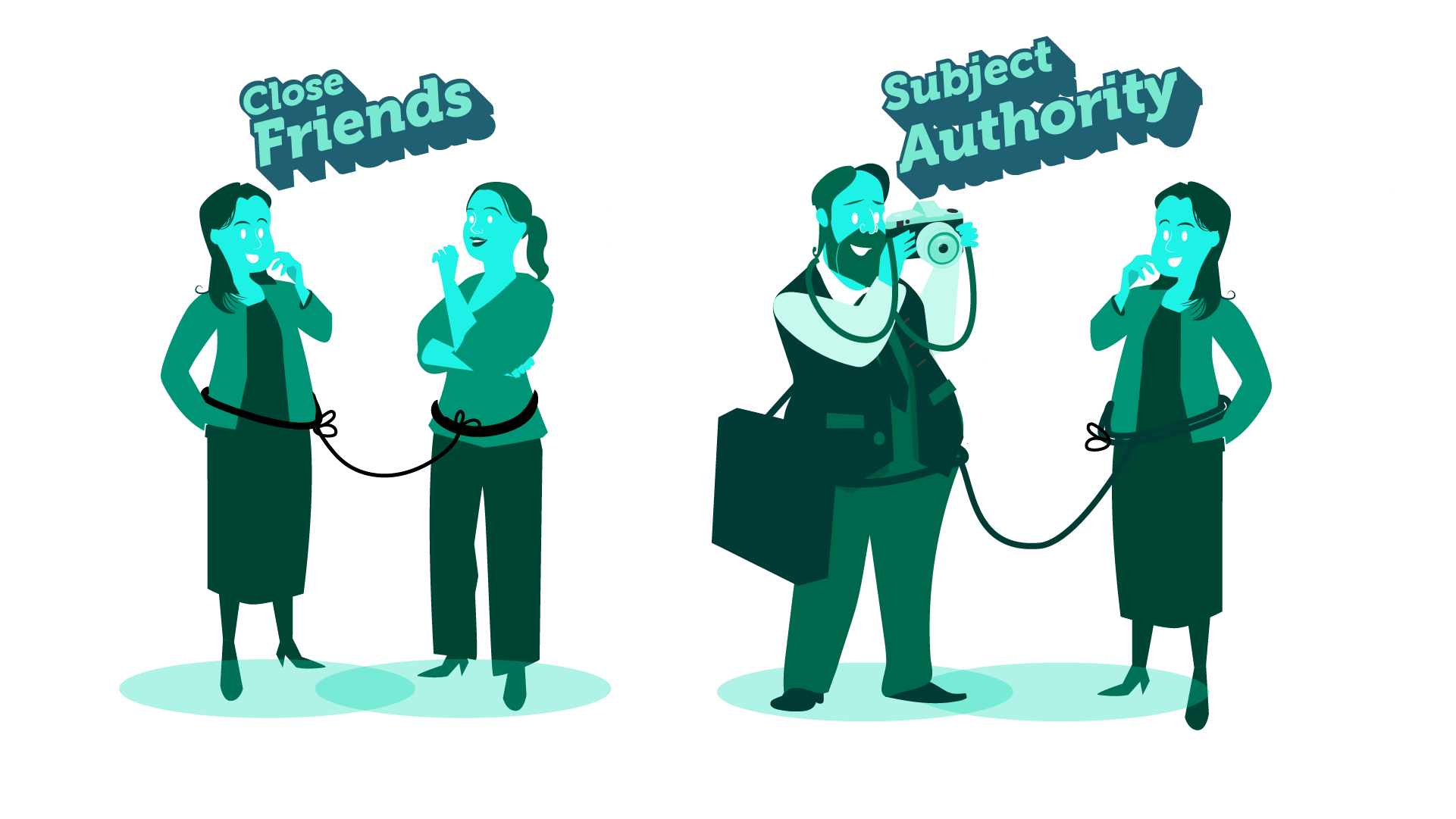
Strong ties:
- Each individual will have fewer strong tie connections, because the traditional criteria for becoming a “strong tie” is reasonably narrow (i.e., family and close friends).
- These ties will generally carry more power; except when subject authority or differences in personal preference play a role. For example, a recommendation from a sibling regarding the best phone brand is likely to carry more weight than a recommendation from an acquaintance. However, in the case of certain specifications (i.e. camera specs), a recommendation from an acquaintance who is a professional photographer is likely to carry more weight. In this instance the acquaintance is technically a weak tie, but with huge relevance to the situation.
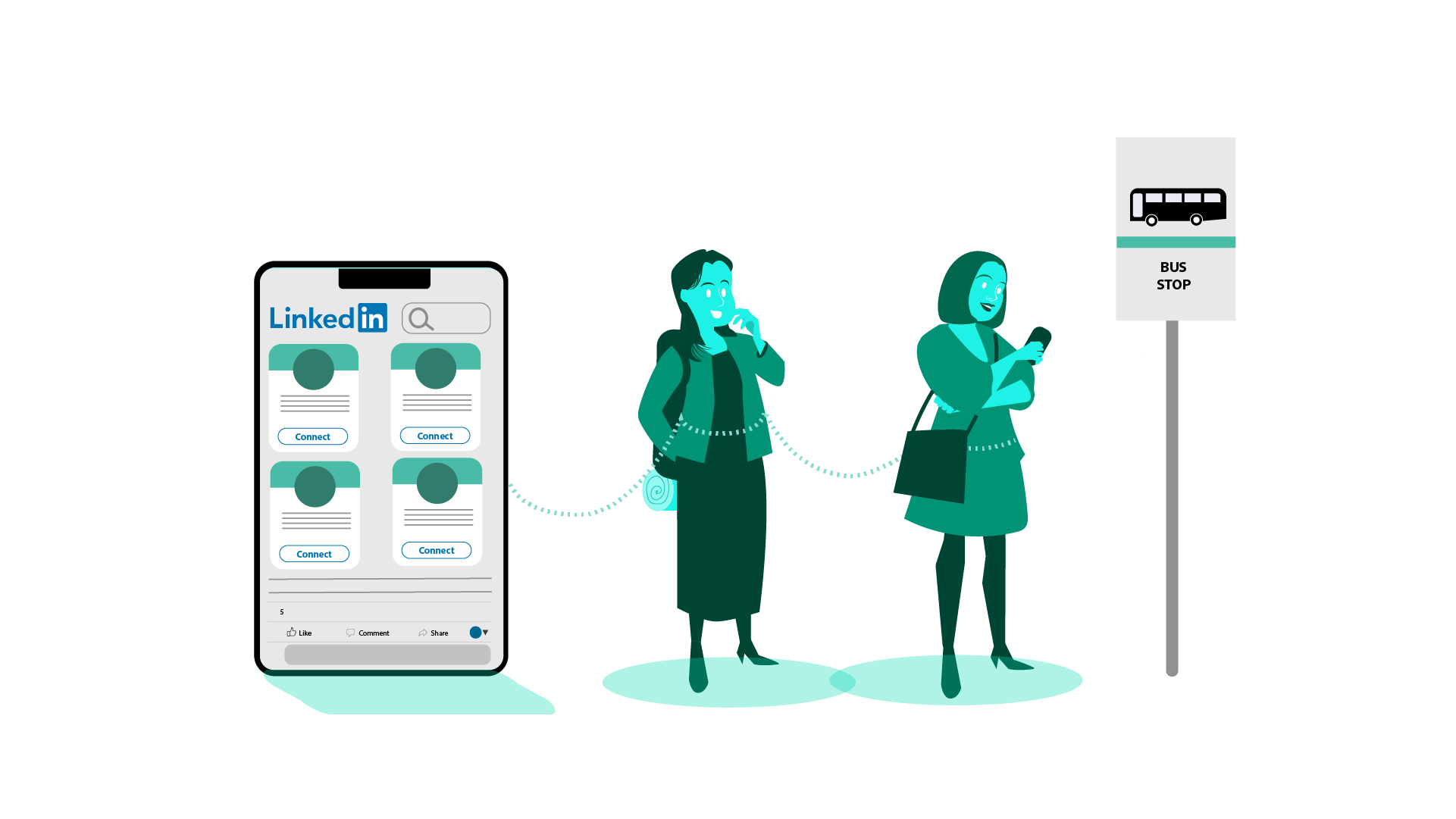
Weak ties:
- Each individual will have a sizable network of weak ties, because the criteria for becoming a “weak tie” is broad (LinkedIn connections, people who attend your Aqua Zumba class, the person you always sit behind on the bus, but have never spoken to).
- These ties will carry less inherent power, but can be of greater influence when context lends them authority. You are less likely to view the opinion of an acquaintance in as high regard as your best friend’s opinion. Unless that acquaintance’s experiences and needs are better aligned with your own than the best friend’s.
- The power of a weak tie is determined by a spectrum that takes into account the authority, credibility, and alignment of the connection.
Social Ties Can Change Over Time
Remember, ties move between weak and strong as time passes. Events and experiences can create ties, distance can weaken ties.
If you become a competitive long distance runner, for instance, your ties will develop and strengthen in that specific context as you meet and interact with individuals whose identity aligns with your own. Ties are fluid by nature and the level of influence they have over you is very circumstantial and contextual.
Clubs, communities and workplaces can also have their own version of ties, with a core group that spreads out and becomes weaker. Imagine that you attend a running club.
There might be a few select members who attend the same sessions as you each week. These are your strongest connections within the club. You also have a connection with the receptionist, who you see every time you visit, and the owner of the club. Though weaker, these connections are still relevant.
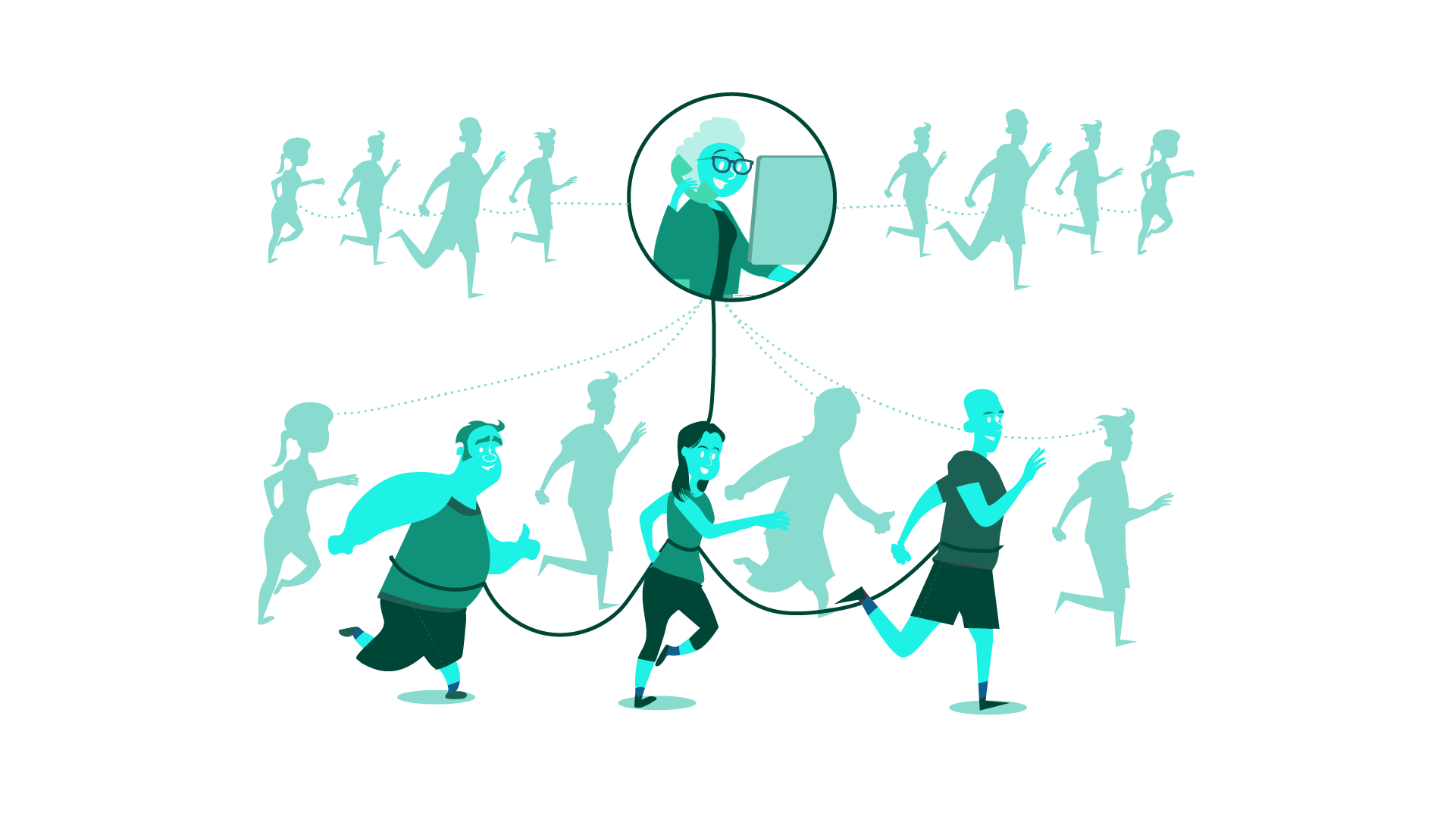 You also have access to a network of other connections through each of these individuals; the receptionist will talk to every single member of the club, even the ones you don’t necessarily see often. The members you attend sessions with may attend other sessions that you don’t, extending the reach of your network to those other members.
You also have access to a network of other connections through each of these individuals; the receptionist will talk to every single member of the club, even the ones you don’t necessarily see often. The members you attend sessions with may attend other sessions that you don’t, extending the reach of your network to those other members.
Even brands develop strong and weak ties within specific contexts; some people love Apple and only buy Apple products. Apple has spent a lot of time and resources on developing their own version of ties, by associating a sense of identity and community with their products.
Level of Influence
As this article has already touched on, the level of influence of a tie is not determined by whether the tie is traditionally considered weak or strong. A weak tie can carry huge influence within the right context.
For example, a person who occasionally goes for a jog will carry less authority on choice of running shoes than an avid runner who you know participates in marathons every month. The degree to which you are familiar with each of these individuals matters less than their authority on running.
In choosing the weak ties you’d like to target in your campaign, try to achieve as much alignment between ties as possible. This increases the tie authority. Consider the following attributes as an example.
Let’s say a person you are targeting with your campaign is religious, attends a mosque, and lives in East Anglia. To this particular person, the imam at their own mosque has significantly more credibility than the imam of another mosque in the North of England.
Alignment translates to higher levels of influence, which maximises the influence of weak ties. By this measure, a weak tie can actually be extremely powerful, within the right context.
Which Is More Important For Marketing Your Brand?
This is the million-dollar question and it is highly contested.
With regards to weak ties, we have increased scope and range. We call this reach. Reaching a single individual gives your brand access, theoretically, to a vast network of weak ties. Strong ties, on the other hand, carry more influence and relevance where subject authority isn’t required.
Generally, weak ties have greater macro-level impact, primarily because of their scope (i.e., sending a social media advert out to millions) and how easy they are to achieve.
But the authors of Strong Ties Versus Weak Ties In Word-of-Mouth Marketing claim that strong ties are most effective at driving product growth.
This is because their research has shown that advertising competes against weak ties in disseminating information on a global basis. It is this global reach that has been widely considered to be the key strength of weak ties over strong ties.
In other words, given that we can lean on advertisement to achieve reach, weak ties are less critical to achieving this, which means that strong ties bring something new to the table that weak ties do not.

We believe that this debate is largely redundant; we don’t think the question should be, “which is better, strong or weak ties?”, but “which is better for your business?”.
Experience shows that while some businesses can benefit enormously from strong-tie-oriented campaigns, others are far better suited to weak-tie-oriented campaigns. In most cases, the best campaigns combine the use of both weak and strong ties to achieve relevancy and reach simultaneously.
Which brings us onto our next question…
Is Your Business Strong-Tie-Dependent Or Weak-Tie-Dependent?
Having established that network ties play an important role in the dissemination of behaviour adoption, we must now consider how best to elicit the spread of adoption.
To achieve this, should your particular business be focusing on leveraging strong ties, weak ties, or a combination of the two?
Let’s look at a couple of example businesses.
Strong Tie Example - Hair Salon
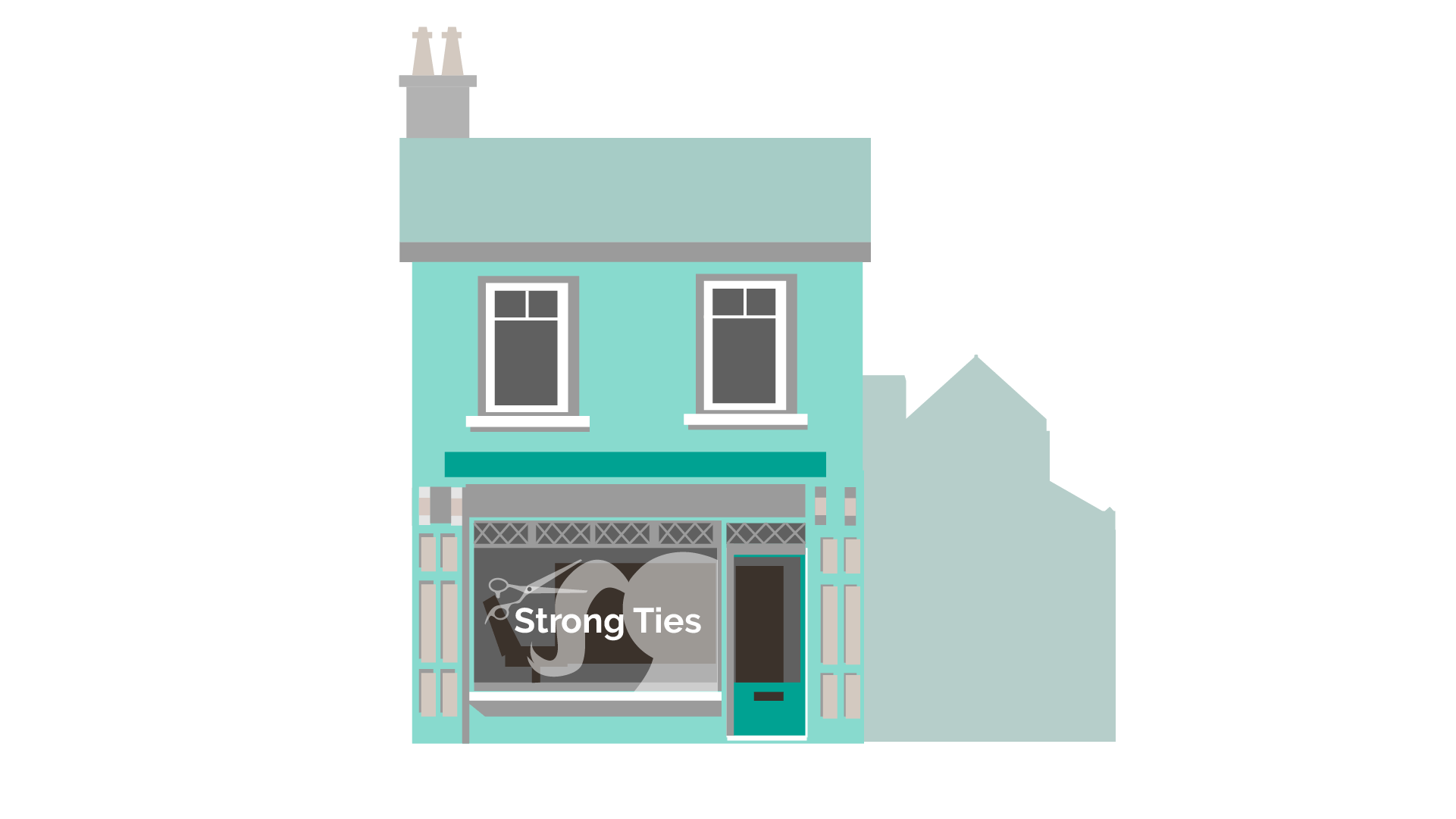 As a local business, this hair salon isn’t likely to be attempting global or even national reach. They want to attract customers from their local area, from within a commutable distance. Because of this, weak ties lack their usual benefit of scope and range, diminishing their power. Moreover, they aren’t hugely relevant in the long term, because successful businesses will rely on repeat customers.
As a local business, this hair salon isn’t likely to be attempting global or even national reach. They want to attract customers from their local area, from within a commutable distance. Because of this, weak ties lack their usual benefit of scope and range, diminishing their power. Moreover, they aren’t hugely relevant in the long term, because successful businesses will rely on repeat customers.
Strong ties, however, have a notable advantage for this particular business; everyone needs their haircut, which means that almost every single strong tie that a person has could potentially adopt the hair salon as their own and go on to promote them further. It is therefore in a local salon’s interests to leverage these strong ties.
Through a referral scheme, for example, a local salon could encourage their customers to spread the word. Depending on the strength of the ties making the referrals, it may only take one or two connections to persuade a new customer to switch to the same salon.
This is a simple, repeatable process. And given that most people stick with the same hair salon for long periods of time, it serves as a successful and continuous model for acquiring new customers.
Hypothetically, let’s say the hair salon chose to prioritise weak ties instead. They do so by advertising their business online, via a Pay-Per-Click (PPC) facebook campaign. Simply spreading awareness and visibility of their hair salon won’t necessarily give them an edge over the competition, particularly if the competition is focused on leveraging strong ties.
Local businesses like hair salons rely heavily on social proof and personal recommendation, making them far better suited to referral campaigns (strong tie marketing) than online advertising.
Strong Tie Marketing Tactics
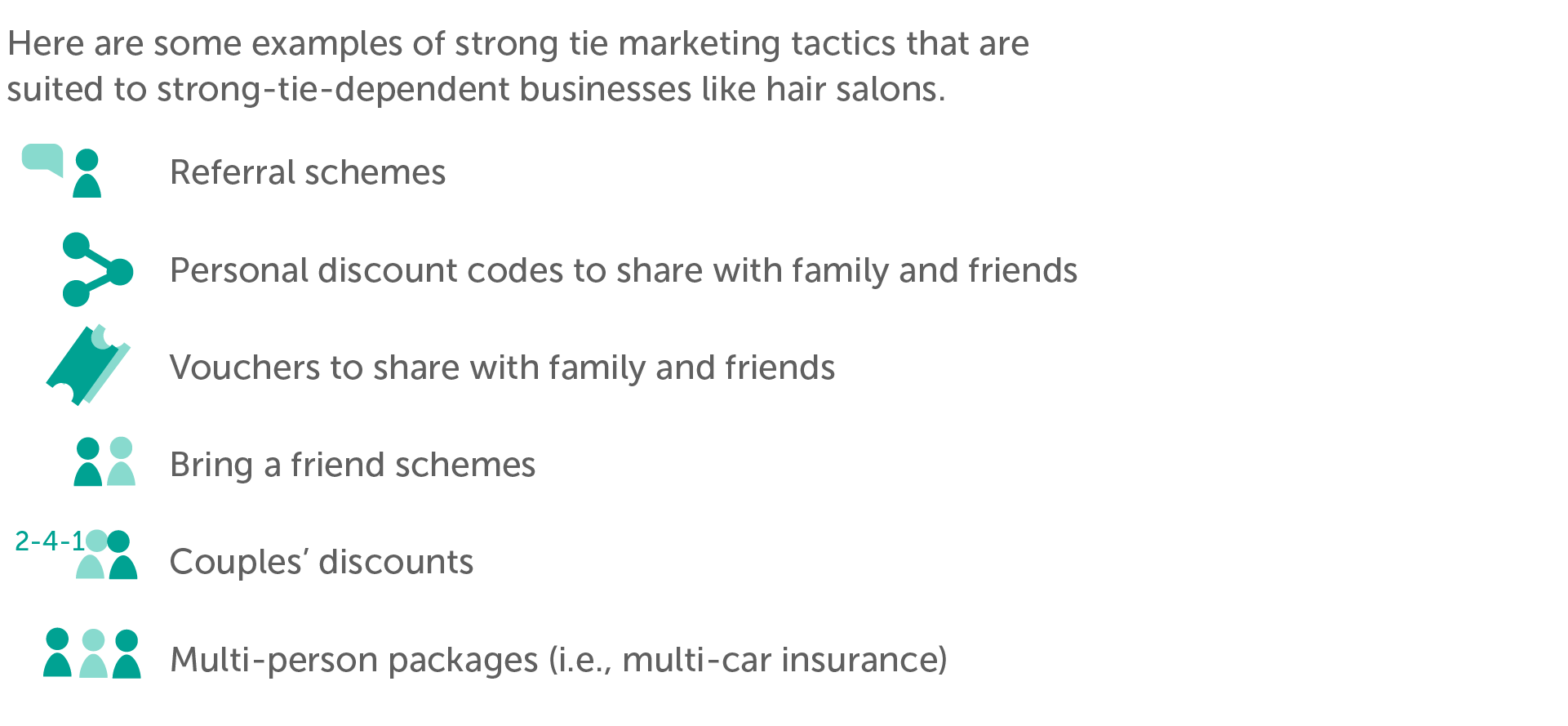 Each of these tactics encourages customers to spread the word to their strong tie connections.
Each of these tactics encourages customers to spread the word to their strong tie connections.
When devising a strong-tie-orientated strategy, consider what your audience requires in order to like and promote your product or service. How involved is the decision? Are there any risks to factor in? Take the time to really understand their position and motivations, then use this understanding to create a customer-centric campaign.
Your marketing should focus on finding ways to encourage individuals to promote your brand to an important connection, disseminating awareness through each customer’s personal network.
Weak Tie Example - Running Shoes Provider
 In contrast, a business selling running shoes is limited in its use of strong ties (in the traditional sense), because a customer’s purchase relies on having a reasonably niche interest.
In contrast, a business selling running shoes is limited in its use of strong ties (in the traditional sense), because a customer’s purchase relies on having a reasonably niche interest.
Few individuals will have many strong ties (close family and friends) who are also avid runners.
As such, leveraging which relies heavily on networks of family and friends would be fairly ineffective. Moreover, this particular business isn’t local, but is trying to achieve national and possibly global product popularity.
For these reasons, a business selling running shoes is better suited to leveraging weak tie connections. Weak ties, in this instance, give the business the benefit of scope, allowing the popularity of their running shoes to spread.
But remember, weak ties can pack a punch. Runners who belong to a club or who run with a group every week will have a network of strong connections that, though not technically a strong tie in the traditional sense, carry a significant degree of influence over one another.
How do you generate this spread?
The issue with weak ties is that they carry less power than strong ties. Seeing a stranger adopt a trend isn’t likely to persuade you to adopt the trend yourself. However, concentrated exposure to a specific trend or adoption can carry a great deal of influence.
The theory of concentrated exposure is based on the fact that the bigger a person’s social network, the more difficult it is to convince them to adopt a new behaviour. In other words, the more connections they have, the more of those connections will need to adopt the behaviour for them to consider doing so themselves.
In the case of behaviour, product, or service adoption, the extent and quantity of exposure is not nearly as important as the relevance and density of that exposure within an individual’s social networks. Concentrated exposure refers to the tactical spread of awareness. It prioritises increasing the percentage of people an individual knows who are adopting a specific behaviour, product, or service, rather than the total number.
This is a crucial aspect of leveraging weak tie marketing, because it increases the influence of even the weakest of ties.
Facilitating concentrated exposure between weak ties will enable the spread to take on a life of its own, snowballing into other groups and spaces organically. With enough fuel, you can keep this fire raging until the behaviour has achieved widespread popularity.
In practice, what does this look like?
Weak Tie Marketing Tactics
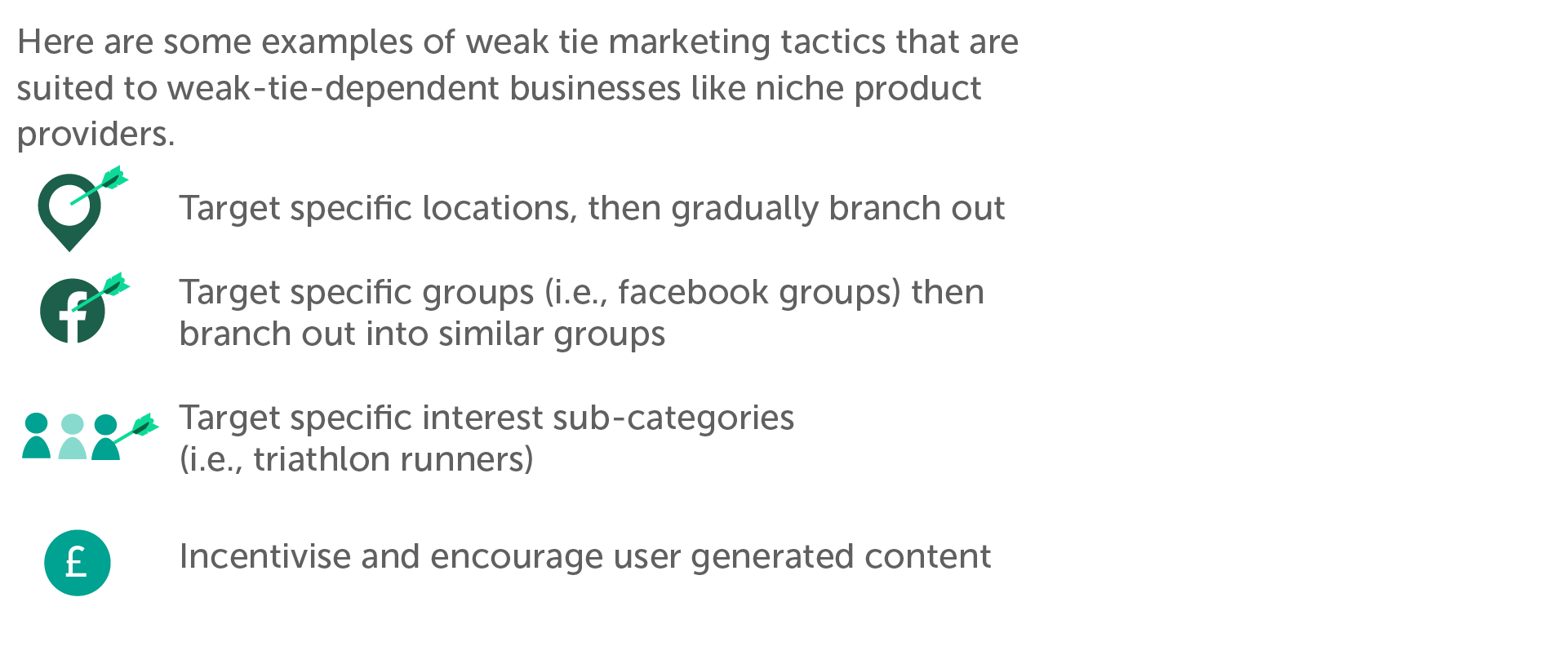 With each of these examples of weak tie tactics, you would concentrate exposure in micro-groups, ensuring that each individual within those groups is personally subject to maximum exposure. Once you achieve this, you can gradually branch out, and expand your reach.
With each of these examples of weak tie tactics, you would concentrate exposure in micro-groups, ensuring that each individual within those groups is personally subject to maximum exposure. Once you achieve this, you can gradually branch out, and expand your reach.
For example, the running shoes brand might target five facebook groups dedicated to triathlon runners. They could achieve this by launching a free giveaway or competition. By the end of this campaign, the five target groups will have more exposure to, and awareness of the brand.
Instead of seeing one or two weak tie connections engaging in the running shoes brand’s competition, members of the groups will see several, successfully establishing concentrated exposure. This will increase the likelihood of them also entering the competition or making a purchase.
These members are likely to be members of similar groups. By encouraging them to share for an additional competition entry ticket, you can create an organic spread between similar groups.
Mixed Tie Example - Pasta Subscription Service
Some businesses will be able to leverage a combination of weak and strong ties when they market their business. For example, take a local bakery that offers county-wide delivery. This bakery could benefit from using strong tie focused referral schemes between family and friends. In addition, they could also leverage weak ties nad concentrated exposure marketing tactics. Both methods will spread word of their business throughout the county.

Pasta Evangelists, a fresh pasta delivery service, uses both strong and weak ties to great effect. They use a referral scheme to encourage word-of-mouth adoption of their service between family members. As well as encouraging customers to take pictures of their dishes and tag them on social media. Or in other words, “user-generated content”.
Most individuals have a range of strong and weak ties following them on social media. As such, user-generated content facilitates strong and weak tie awareness simultaneously.
Getting Started
The first step to leveraging ties as a brand is to identify whether your business is primarily weak-tie-dependent or strong-tie-dependent.
In answering this question, consider whether your business relies on word-of-mouth referrals between family and friends. Or whether it is niche enough that weak ties are more relevant.
What is the source of strong connections in your chosen audience? Is it shared experience, community, clubs, events, shared values, or something else?
Having answered these questions, you may find that your business is best suited to a combination of both strong and weak ties.
